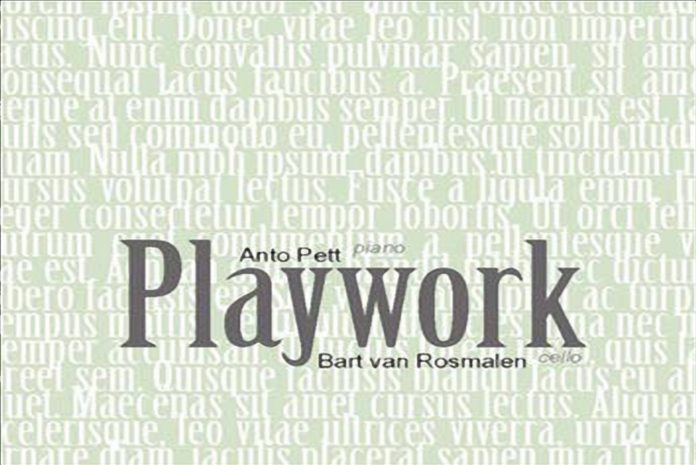It’s often essential to choose the right combinations of sounds in an improvisation. Today in this field of music we have a plethora of artists coming from a lot of different styles that very often can’t express the emotions streaming out from the timbric function and that makes the real difference between a high-level working from an ordinary one. The Estonian pianist Anto Pett, professor of improvisation at the Estonian Academy of Music and Theatre in Tallinn, solved this problem with an intelligent educational work: in his book “Le système pédagogique sur l’improvisation d’Anto Pett““, the Estonian composer establishes the fundamental coordinates to obtain excellent results in the improvisation; they consist in a right concentration, in the right relation between dissonance and empty silent spaces and in the controlled organization of the process of improvisation; this method is taught to young musicians and also employed by the expert professional musicians, so you can enter the world of physicality of the instruments: a musician takes a real possession of his own instrument, I intend a physical possession that enables him to improvise sounds and music strictly connected to his mood and feelings.
In this rare recording, Anto Pett gives an example of his talent building a “patchwork” sound along with the cellist Bart Van Rosmalen; Pett is a sublime pianist playing alternately on a traditional piano and on a prepared piano, and his style is made of powerful, resonant, deep and mysterious clusters; this effect is obtained using the sounds of contrast of the instrument. Bett becomes subliminal when he plays prepared piano, and the development of the piece leads to moments of real trance music with excellent improvisational value. Van Rosmalen shows great personality in the use of extended techniques on the cello: his style is a compromise between the austere chamber music and figurative contemporary music. “Playwork” reaches the world of evocation sound where the dissonances are well accepted by our ears, creating long “suspensive” times filled with climax (at a certain point in the fourth track seems to be in another dimension, in the grip of an urgent and visionary representation of the unknown), but the thing that must be mentioned is the extraordinary energy maintained by the two musicians for so long, probably an application of the theories of Pett. In this recording, charm, art, mystery and virtuosity are well cultivated. As they explain in the liner notes“…the play of improvisation finds its expression for a great deal in what we can call “body language”. Nervous gestures. Hard beats. Fastness. Slow gliding. Murmuring. Being provocative or shy with big laughter or soft cries….”
———————–
Spesso nell’improvvisazione è fondamentale scegliere anche le combinazioni giuste di suoni. Oggi in questo campo abbiamo una pletora di artisti delle più varie provenienze di stile che spesso non riescono a dare quel quantum in più consistente in quell’apporto emotivo che scaturisce dalla timbrica, e che contraddistingue un lavoro di alto livello da uno ordinario. Il pianista estone Anto Pett, professore di improvvisazione all’Accademia Estone di Musica e Teatro di Tallinn, ha risolto questo problema anche grazie ad un intelligente lavoro didattico: nel suo libro “Le système pédagogique sur l’improvisation d’Anto Pett“, l’estone addirittura traccia quelle che sono le coordinate fondamentali per ottenere eccellenti risultati nell’improvvisazione, che stanno nella giusta concentrazione, nel giusto rapporto della dissonanza con gli spazi vuoti (di silenzio) e nell’organizzazione controllata del processo di improvvisazione; con questo metodo che viene insegnato ai neofiti così come ai musicisti più navigati per il loro arrichimento, si entra nel mondo della fisicità degli strumenti collegati agli umori e ai sentimenti del musicista improvvisatore.
In questa rara registrazione, Anto Pett dà un saggio della sua bravura costruendo una sorta di patchwork sonoro assieme all’apporto del violoncellista Bart Van Rosmalen: Pett alterna un pianismo eccelso basato sull’alternanza del piano tradizionale con uno preparato, fatto di clusters potenti, risonanti, profondi e misteriosi, sfruttando le sonorità di contrasto del piano; quando poi usa il piano preparato si assiste ad una vera e propria trance musicale di eccellente valore improvvisativo. Van Rosmalen, da parte sua, dimostra grande personalità nell’utilizzo delle tecniche estese al violoncello conferendo alla composizione qualcosa che sta la cameralità austera e tutta la materia della contemporaneità. Lo sforzo dei due dà origine ad un mondo di suoni evocativo che dalla dissonanza dà vita a qualcosa che è ben accetta alle nostre orecchie, creando lunghi passaggi “sospensivi” ricchi di climax (nel quarto brano sembra di essere ad un certo punto in un’altra dimensione di immagini, in preda ad una urgente e visionaria rappresentazione dell’ignoto); ma la cosa che più deve essere ricalcata è la straordinaria energia che viene mantenuta dai due musicisti per così lungo tempo e che è probabilmente applicazione delle teorie di Pett. In questa registrazione fascino, arte, mistero e virtuosismo sono tutti elementi ben coltivati. Come spiegano i due nelle note di copertina “.…il gioco dell’improvvisazione trova la sua completa espressione in quello che possiamo chiamare “linguaggio del corpo”. Gesti nervosi. Battiti forti. Resistenza. Lento scorrimento. Mormorio. Essere provocatori o timidi con una grande risata o degli urli controllati …. “







